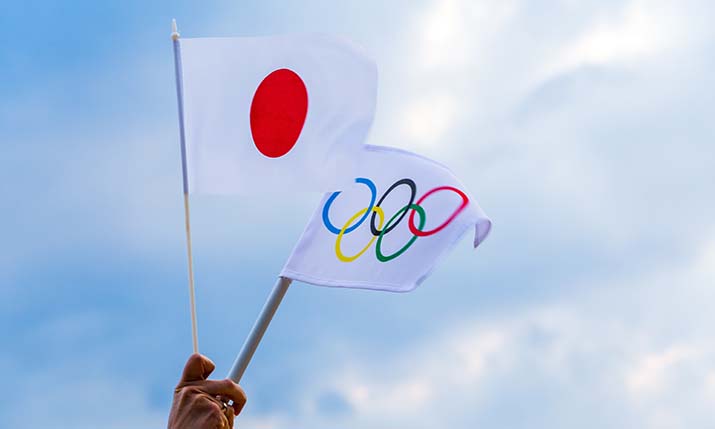UHD and beyond: Tedial on maximising the content opportunity in 2022

By Julian Fernández-Campón, CTO, Tedial.
Recent global sporting events have re-accelerated the industry’s roll out of 4K and 8K as well as HDR and HFR technology enhancements, as media companies – particularly the streamers and production facilities – continue the push to deliver the very highest quality pictures to viewers.
The transition to UHD for broadcasters has so far been a slow process, IP is a key element to the success of UHD due to the huge bandwidth requirements. The IABM Next Generation Imaging report explains: “When it comes to infrastructure deployed, media companies prefer to adopt an IP or a hybrid SDI-IP approach than upgrade to 12G-SDI or Quad 3G-SDI.”
Despite the industry’s slow take up of UHD, many consumers are keen to access high-quality content on their TV sets at home. For consumers there are two genres where UHD comes into its own, sports and movies. For the media industry, live sporting events present a perfect proving ground for new technologies that improve workflows and provide high-quality viewing experiences. It requires substantial effort for suppliers to work together to achieve a flawless product for their audiences.
When it comes to interoperability, there are few configurations that merge solutions from diverse suppliers for 100% compatibility immediately. In fact, interoperability based on networked media open specifications (NMOS) has manifested as a limiting factor of IP technology because its specification leaves a lot to interpretation. A product may meet the NMOS specification, but it may also have communication problems with other products. While the video/audio transport part is simple, the control of communications between systems and the control of target devices is difficult and needs significant improvement.
8K and beyond
The recent Olympic Games that took place in Tokyo highlight the success of IP, UHD and HDR production and distribution. Clearly, not all sporting events are distributed on such a large scale or to such a huge global audience but regardless, all sports broadcasters must have the capabilities to record and store content in the highest definition to ensure futureproofing. The production industry already has the capabilities to record in 12K, with state-of-the-art cameras such as Blackmagic’s Ursa Mini Pro 12K.
From a media management perspective, UHD formats pose extraordinary challenges. At medium to low compression levels, the size and number of video files grow dramatically. The technology of most UHD cameras segments during recording into 2-4GB consecutive video files and/or saves each frame to a different file (DPX, RAW). As such, content in UHD formats needs a component-based solution where the different video, audio and subtitle tracks are in multiple files. Media management providers must incorporate a larger number of UHD camera formats to allow customers to adapt their workflows to the pace of the industry.
With all these considerations what is the key to success for sports broadcasters? The answer is an efficient content supply chain that is capable of producing and delivering UHD content. To incorporate this supply chain, sports broadcasters need to consider five factors. These include:
- Media types – different types of content
- Systems to integrate – to manage and transform the content
- Multiple sites or locations – to build the content supply chain
- Building and evolving the content supply chain
- Evolution – to be prepared for new UHD formats to arrive
By creating an efficient content supply chain, workflows can be adapted to meet the needs of the creatives, and not the opposite, this is important. Using software-defined workflows the notion that interoperability is limited to applications that are designed specifically to work together is abandoned. Instead, it adopts the model that applications can interoperate with any other, as long as they follow a set of interoperability rules and security policies, either natively or with adapters.
Seen from a more general and abstract position, workflows pivot from orchestration, which is a very rigid, bot-like workflow co-ordination, to choreography, where workflows can be seen as the art of designing sequences of tasks that efficiently integrate all the participants into a process that focuses on the creativity of people to produce the final content. This concept comes from the idea that the production process is a combination of manual and automated processes. Although it has some predefined tasks, in essence, the number of steps is unpredictable and will depend on the artistic decisions and must obey the creative process.
The final goal is to support human creativity by connecting all the tasks in the different scenarios and content production workflows (shots selection, editing, colour correction, VXF, audio production,) into a software-mediated integration and automation. It’s important to minimise, as much as possible, the human interaction for those repetitive tasks and more importantly be able to provide the flexibility and freedom needed in these processes. It’s also important that sports broadcasters are self-sufficient so that they can evolve their own workflows without involving the vendor, enabling them to easily deliver content to different locations. This is a revolution in the sports production process, as it makes it agile and adaptative.
New media paradigm
This brings us to a new era in media management, with a new paradigm; the media integration platform or no-code iPaaS for media. This platform integrates all the components and complexity of the workflows, using all the APIs and additional methods required, to read older systems. This means that one change in one system will only impact in the plug-in with the platform, and not in the rest of the systems that are part of the same workflow. This is important because every individual system doesn’t need to be aware of what systems produced the results during the previous steps of the workflow. For example, triggering AI tools to analyse or read content will be normalised into the platform’s standard data model.
